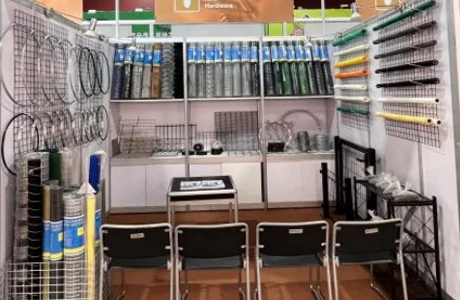hot dip wire
Understanding Hot Dip Wire A Comprehensive Overview
Hot dip wire, a term frequently encountered in metalworking and manufacturing, refers to wire that undergoes a hot-dip galvanization process. This method involves immersing the wire in molten zinc, which forms a robust and protective zinc coating around it. The result is a wire that boasts enhanced resistance to corrosion, making it highly suitable for various outdoor applications and in environments where exposure to moisture is common.
The Hot Dip Galvanization Process
The hot-dip galvanization process involves a series of well-defined steps. Initially, the wire is cleaned to remove any impurities, such as rust, grease, or dirt. This cleaning phase is crucial, as it ensures that the zinc can adhere properly to the surface of the wire, leading to an even coating. Common cleaning methods include mechanical cleaning, acid pickling, or even a combination of both.
Once cleaned, the wire is then dipped into a bath of molten zinc, maintained at temperatures around 450 degrees Celsius. The immersion time dictates the thickness of the zinc coating. After the wire is sufficiently coated, it is removed from the bath and allowed to cool. During the cooling process, the zinc reacts with the iron in the steel wire to create a series of zinc-iron alloy layers, further enhancing the protective properties of the wire.
Benefits of Hot Dip Wire
1. Corrosion Resistance The primary benefit of hot dip wire is its exceptional resistance to corrosion. Unlike untreated wire, which can quickly succumb to rust when exposed to the elements, hot dip wire can withstand harsh environments, making it ideal for applications in agriculture, construction, and outdoor fencing.
2. Durability The zinc coating not only prevents rust but also protects the wire from physical damage. Hot dip wire is robust and can endure significant wear and tear, extending its lifespan compared to electroplated or untreated counterparts.
hot dip wire

3. Adhesion The hot-dip process results in a stronger bond between the zinc coating and the wire itself. This ensures that the coating does not flake or peel off easily, providing long-lasting protection.
4. Cost-Effectiveness Although the initial investment in hot dip galvanization may be higher than other coating methods, the long-term benefits—such as reduced maintenance costs and extended product life—often make it a more economical choice.
5. Environmental Resistance Hot dip wire is less susceptible to damage caused by UV rays and other environmental stressors, making it a preferred option for applications in various weather conditions.
Applications of Hot Dip Wire
Hot dip wire finds applications across numerous industries due to its robust characteristics. In the construction sector, it is commonly used in rebar and wire mesh to reinforce concrete structures. Additionally, it is essential in the agricultural sector for fencing and supporting structures, helping farmers and ranchers protect their livestock and crops.
Moreover, hot dip wire is used extensively in manufacturing processes where durability and longevity are paramount. This includes the production of outdoor furniture, automotive parts, and various hardware applications where exposure to moisture is likely.
Conclusion
Hot dip wire is an excellent choice for anyone seeking a reliable, durable, and low-maintenance wire solution. With its superior corrosion resistance and longevity, it stands out as a preferred option in numerous applications. As industries continue to seek robust materials for outdoor and demanding environments, hot dip wire will undoubtedly remain at the forefront of material selection, offering both performance and peace of mind for manufacturers and end-users alike.
-
Space-Saving Chain Fence Hacks Vertical Gardening with Cyclone MeshNewsJul.16,2025
-
Innovations in Iron Nail Wire Production for Modern ConstructionNewsJul.16,2025
-
Creative Uses of Wire Netting Fence in Modern Landscape DesignNewsJul.16,2025
-
Barbed Wire Fence Innovations in Anti-Climb TechnologyNewsJul.16,2025
-
Architectural Uses of Umbrella Nails for Aesthetic Roof DesignsNewsJul.16,2025
-
Architectural Uses of Razor Barbed Wire in Secure Urban DesignNewsJul.16,2025




